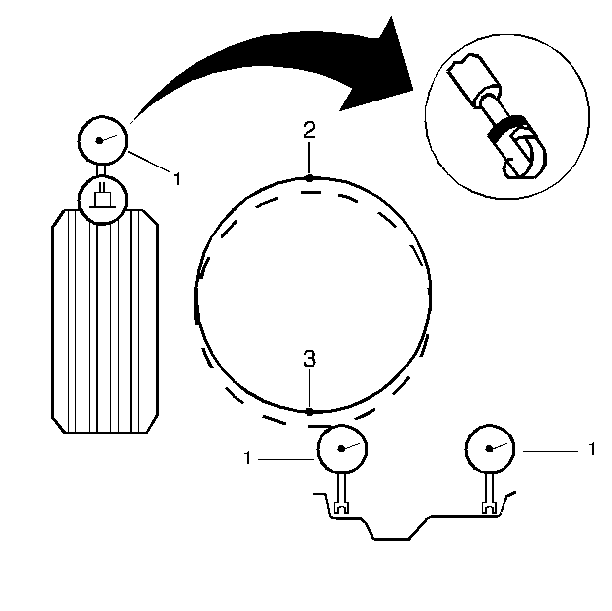Measure wheel runout with an accurate dial indicator. Measure
with the wheel installed or with the wheel off of the vehicle. Use an accurate
mounting surface such as a wheel balancer. You can measure with or without
the tire mounted on the wheel.
Measure radial runout and lateral runout on the inboard and outboard
rim flanges. With the dial indicator in position, rotate the wheel slowly
one revolution. Record the total indicator reading. If any measurement exceeds
the specifications, and if there is a vibration that wheel balancing does
not correct, replace the wheel. Disregard any indicator readings that are
due to welds, paint runs, or scratches.
Radial Runout


